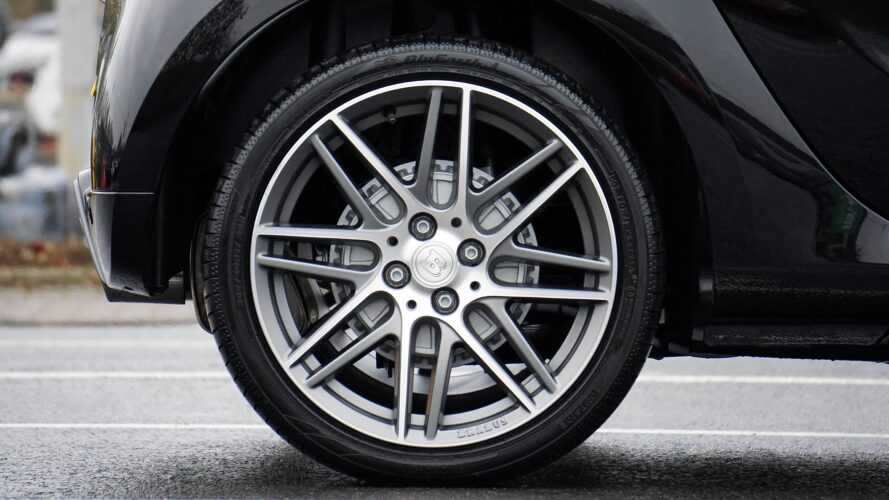Top 5 Things to Consider When Selecting the Right Tires and Rims
No matter how fast you drive and how efficient your car’s engine is, your vehicle will only be as good as your tires and rims. If you accidentally buy a terrible or faulty tire or rim, you’re not just severely reducing your car’s performance capabilities. A mismatched tire and rim are also risky since they could potentially lead to losing control when you’re hard braking. So, knowing exactly what you’re doing when you’re planning to buy new tires or rims for your car is vital.

Here are the top five things you need to consider when selecting the right tires and rims for your vehicle.
1. Always choose matching tires and rims
Regardless of whether you’re planning to change your tires or rims, you must ensure both your tires and rims should always match. If you’re looking for new tires, take note of the width of your rims, and make sure that they match. You also need to double-check the bolt or lug pattern to put everything into place properly. On the other hand, if you are purchasing new rims, you’ll have to ensure that they also match your tires.
2. Double-check the set of numbers and code on the side of your tire
All tires have a set of numbers on the side, and these codes will be your reference when you’re picking new tires. Additionally, it’s important to note that each number or letter corresponds to a specific component you’ll need to consider before purchasing new tires and rims.
- The Letter Prefix tells you the service description of your tires. You may find a P, LT, ST, or T on the first part of the code, which stands for Passenger car, Light Truck, Trailer, or Temporary spare. In this case, you’ll have to pick the tire that matches your needs.
- The Section Width, or the tire’s width in millimeters, follows the letter prefix. Generally, it measures the distance between the sidewall edges and the tire’s tread. So, the larger the section width is, the wider your tires will be.
- After the section width, you’ll find the Aspect Ratio, which corresponds to the section height compared to the section width. It measures the distance outside of the tread to the inside of the wheel, which could also indicate the tire’s purpose. Note that the higher the aspect ratio, the taller the sidewall, which may affect the handling but offer a more comfortable ride since more air on the tire could cushion the bumps.
- Next to the aspect ratio, you’ll find the Speed Rating, which tells you the measurement of the tire’s speed for prolonged periods. A “V” speed rating means you can run the tire safely at speeds up to 149 mph for extended periods. However, if you run it at speeds of 150-160 mph for too long, your tires could explode.
- You’ll find either the letter R or D next to the aspect ratio, which stands for the tire’s Construction. An “R” construction uses a radial-ply tire, while a “D” construction stands for a diagonal tire. Generally, diagonal tires are only used for trailers and trucks.
- The last set of numbers you’ll find is the Size of the rim, which is the diameter of the wheel (or rim) in inches. If you’re planning to upgrade your wheel size, take note of this. You have to ensure that this number matches your rims’ size, or you’ll need to buy new rims so they match your new tires.
3. Determine the size of car rims that fits your tires
The most crucial aspect when selecting the rims is ensuring that the ones you purchase match the current tires you have, or you’ll also need to buy new tires. Other than the size, there are also many factors to consider when selecting the rims, but the most vital aspects to consider are the diameter (which should ALWAYS match with the tires), construction method, and offset and backspace.
4. Buy the car rims based on their purpose
Always go for functionality over flash. Even though it’s tempting to install a sleek new set of rims that goes perfectly well with the feel and design of your car, you must prioritize buying the rims based on their purpose instead of aesthetics. Before purchasing, ask if the wheels are cast or forged, which relates to your rims’ durability and longevity. Cast models are cheaper than forged wheels but more susceptible to damage, while forged versions provide greater durability.
5. Consult an expert on tires and rims
Even if you’ve read everything you need to know about tires and rims, nothing can beat the advice of an expert with years of experience. Remember that selecting the correct tires and rims is vital for your car’s performance and safety, which adds a blanket of security and protection on top of affordable or low car insurance. For professional or frequent tire changes, investing in quality tire changing machines can make the process easier and more efficient. Don’t forget — it’s better to ask yourself questions before upgrading your wheels instead of regretting purchasing the wrong ones later.




